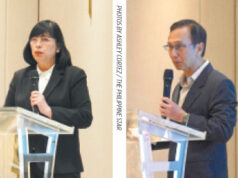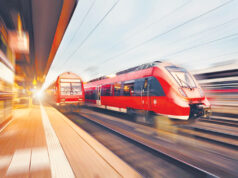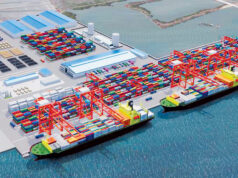Manila is the capital and chief city of the Philippines situated on the island of Luzon and spreads along the eastern shore of Manila Bay. It has been an important piece of the Philippine history being the center of economic, political, social, and cultural activities in the country. After more than four centuries, Manila has undergone many changes and transformed itself into a competitive city that reflects the country’s progress throughout the years.
The city of Manila marks another milestone as it celebrated its 447th foundation day or “Araw ng Maynila” yesterday, June 24. As part of the celebration, the city government is conducting a week-long activities that started on June 18 and will be capped off on June 26.
The celebration is centered on giving appreciation to top individuals who have shared their knowledge and showed devotion for the betterment of the city and its residents. On the first day of the celebration, 283 employees of the Manila City Hall were awarded for their outstanding and exemplary service. The city’s most outstanding educators were recognized and received plaque, certificate and cash incentive on June 19, while the outstanding local judges, prosecutors and police officers were honored on the next day.
During the actual Manila Day, a wreath-laying ceremony was held at the Rizal Park followed by a Thanksgiving Mass at the San Agustin Church. Meanwhile, the much anticipated grand coronation night of the Miss Manila 2018 will be held on June 26 at the Philippine International Convention Center.
Amid the rapid developments in the city, remnants of the past that showcase its roots and rich history remain.
Manila was a busy trading center as early as the medieval period. In 1571, Spanish conquistadors under the leadership of Miguel Lopez de Legazpi, the first Spanish governor-general of the Philippines, visited the area and destroyed its settlements. The colonizers declared the region as a Spanish territory and developed it as the Spanish capital in the East Indies region.
In the following years, Manila became a famous business center not only for traders from Asia, but also from Europe, Latin America and Africa.
Manila was seriously threatened and ruled by foreign powers at various periods. At the start of the 20th century, the city came under American rule, and became a fierce battle field during the World War II. The war brought so much destruction to the city where almost all of its buildings and structures destroyed. As a result, the country’s capital had to be moved to Quezon City.
In June 1976, Manila reclaimed its position as the capital city of the Philippines and has retained the position to date. The city went through rapid economic development and continues to thrive as the nation’s capital.
At present, Manila boasts a towering development with the presence of commercial and office buildings, high-rise condominiums, and world-class art and entertainment facilities. The city also hosts a lot of official buildings and important government institutions such as the Supreme Court and Malacañang Palace, the official residence and principal workplace of the Philippine presidents.
Manila’s role in the past, as being the center of trade activities, continues up to the present. The city houses the two prime points of trading in the country, the Manila North Harbor and the South Harbor. Through these ports, trade within the metropolitan area and between the cities, provinces and other countries continue to flourish.
With the presence of diverse food-processing factories, textile companies, chemical industries, and timber factories, the city is also considered as a manufacturing center. The small factories of the city are mostly located in the districts of Tondo, Binondo and Santa Cruz, while the heavy industries are located in Paco, Pandacan and Santa Ana.
Behind the changes and signs of urbanization, Manila was able to preserve its history through the existing old-aged structures around the city including the historic Fort Santiago, the Manila Cathedral, and the San Agustin Church. These, together with the newly constructed parks and attractions in the city, have helped Manila attract local and foreign tourists.
As the country’s capital city, Manila is often the gauge for measuring the progress of the entire country. Many people say that life in Manila is a reflection of life in the Philippines as a whole. It has a population of 1.78 million as of 2015, based on the census data undertaken by the Philippine Statistics Authority.
Despite the common urban problems the city is facing, it maintains its high ranking in the annual Regional Competitiveness Summit organized by the public-private sector organization National Competitiveness Council (NCC). In 2017, Manila placed second in the overall most competitive cities award in the highly-urbanized cities (HUC) category. It also took the number one spot in government efficiency category, second in infrastructure, and third in resiliency.
In 2016, Manila emerged as the third most competitive city in the country, first in 2015, fifth in 2014, and eight in 2013. — Mark Louis F. Ferrolino



